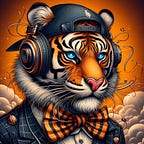The myth of creativity and how to survive as a UX designer
Designing is an interesting field. In the beginning, there is so much excitement and anticipation as you gladly devour the knowledge being passed to you in your course, bootcamp, and other training. It's all so interesting.
However, the real issue begins when you leave the comfort that learning offers. When it is time to create something totally new all by yourself. This can get quite intimidating for some first-timers, for others, it could be all excitement and eagerness to finally begin the real stuff… until they begin the real stuff.
Most beginners have a naive interpretation of creativity. This naivety becomes a hindrance when they begin to create designs.
They think creativity is building something totally new from the scratch. They think it is about doing something never done before. Or being unique. And they become all pumped at the idea of birthing something that will take the world by storm and reveal their ingenuity.
Whoa, slow down...
Creativity is none of those. Realistically.
Having such idealizations will only get you pumped at the start of the project, and fed up before you even get halfway. Or worse, you create a product that fails.
Creativity is about viewing the world in your way. With your own eyes.
To be creative means to see old problems in new ways. And to see new problems in old ways.
To do this you have to:
- See the old and new problems.
- See the old solutions and imagine new ones…
And the only means to achieve those is by truly observing. Yes, you have to observe everything else. Then you take what you need.
That is why creativity isn't really about making stuff never been seen before. It's about observing the work of others before you and then presenting things as seen by your own eyes.
Creativity is about copying…
This might sound so ironic and surprising to some. But understand this, there’s truly nothing new under the sun. Even the most innovative inventions are usually in perfect analogy to something else.
Nothing is totally new, what we often call new are things that build on other things. They are usually a combination of older things.
The World is like a giant recycling plant— for ideas.
Bringing it down to the designer, to survive at what you do, you have to become really good at copying other people’s work. If you try at every interval to come up with your perfectly brand new creation then you will likely fail as a designer because :
- That will take forever. Time is an important resource.
- You will likely create things that don’t follow general conventions — thereby affecting user experience.
- You are surely going to burn yourself out in no time.
Legendary American movie director and producer, Francis Ford Coppola made a statement that beautifully captures my message,
"We want you to take from us, we want you, at first, to steal from us, because you can’t steal. You will take what we give you and then you will put it in your own voice and that’s how you find your voice. And that’s how you will begin. And then one day, someone will steal from you" — Francis Ford Coppola.
The designer's guide to copying others
Every senior professional in creative fields knows the fact that copying other people's work is how you actually get the job done. Until you develop your style.
But what exactly does it mean to copy?
Take someone's work and claim it as yours? No.
Change the title and maybe colors and present it as your work? Still no.
There's an art to copying. In the design community, it's called seeking inspiration, and truly, that is what it is meant to be. Creatives, especially beginners, have to start by copying and then come up with something relatively original.
How to copy creatively:
- Seek inspiration by combining several people's works, not just one.
- Give credit/appreciation where possible, do not plagiarize.
- Understand that the more you look at other people's work the more you decide on what will eventually become your style.
- Play around. Keep an open mind, that is true creativity.
Benefits of copying:
- You learn by observing what works.
- You don't have to spend eternity creating stuff that might end up unusable.
- You develop and hone your ability to spot bad practices in designs.
- You end up creating your style from the things that impress you most.
So dear creatives, learn by feeding off the enormous work available on the internet. It is nothing to be ashamed of. You are not less of a creative person if you do so.
Some of the best platforms for seeking inspiration for different kinds of projects include:
- Behance
- Dribbble
- Medium
Conclusion:
Creativity is the ability to observe and make something out of your observation. But first, you need to observe.
